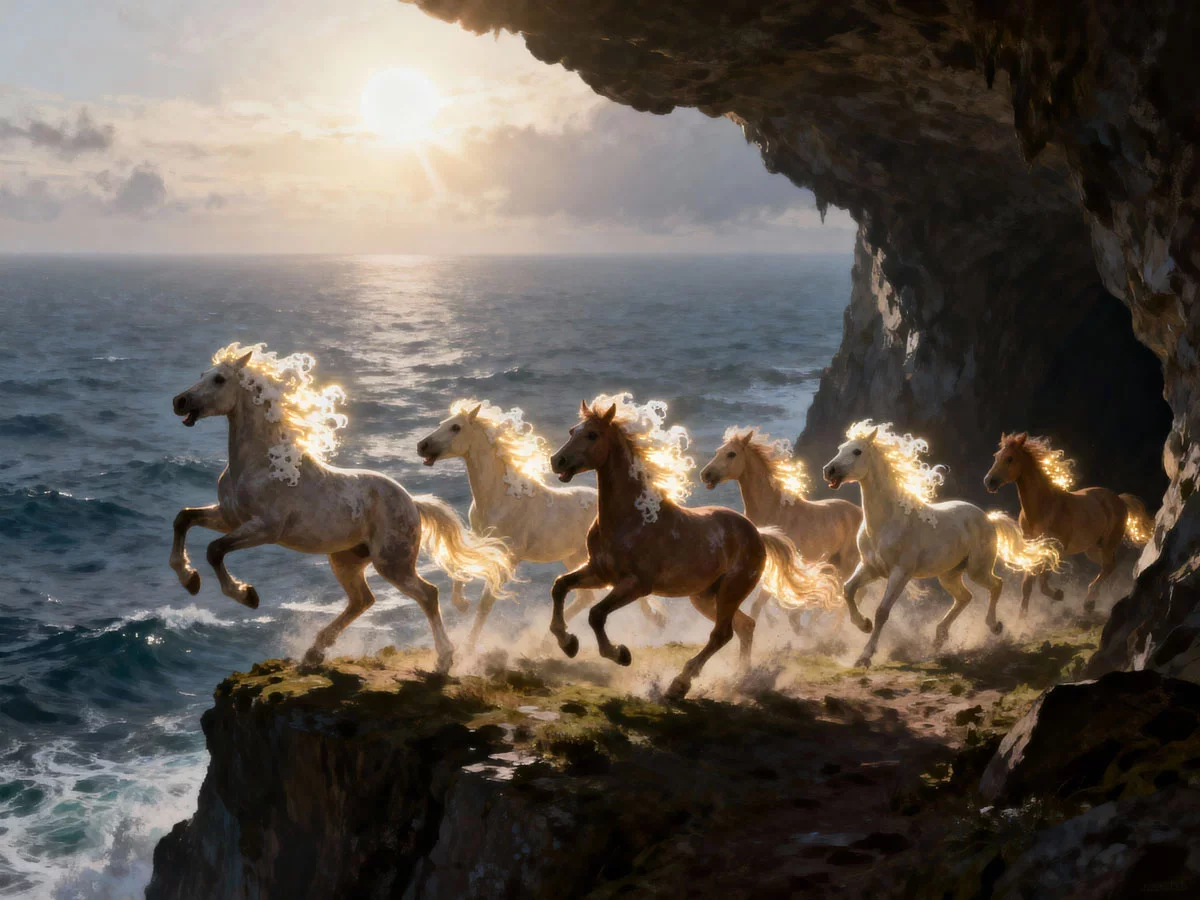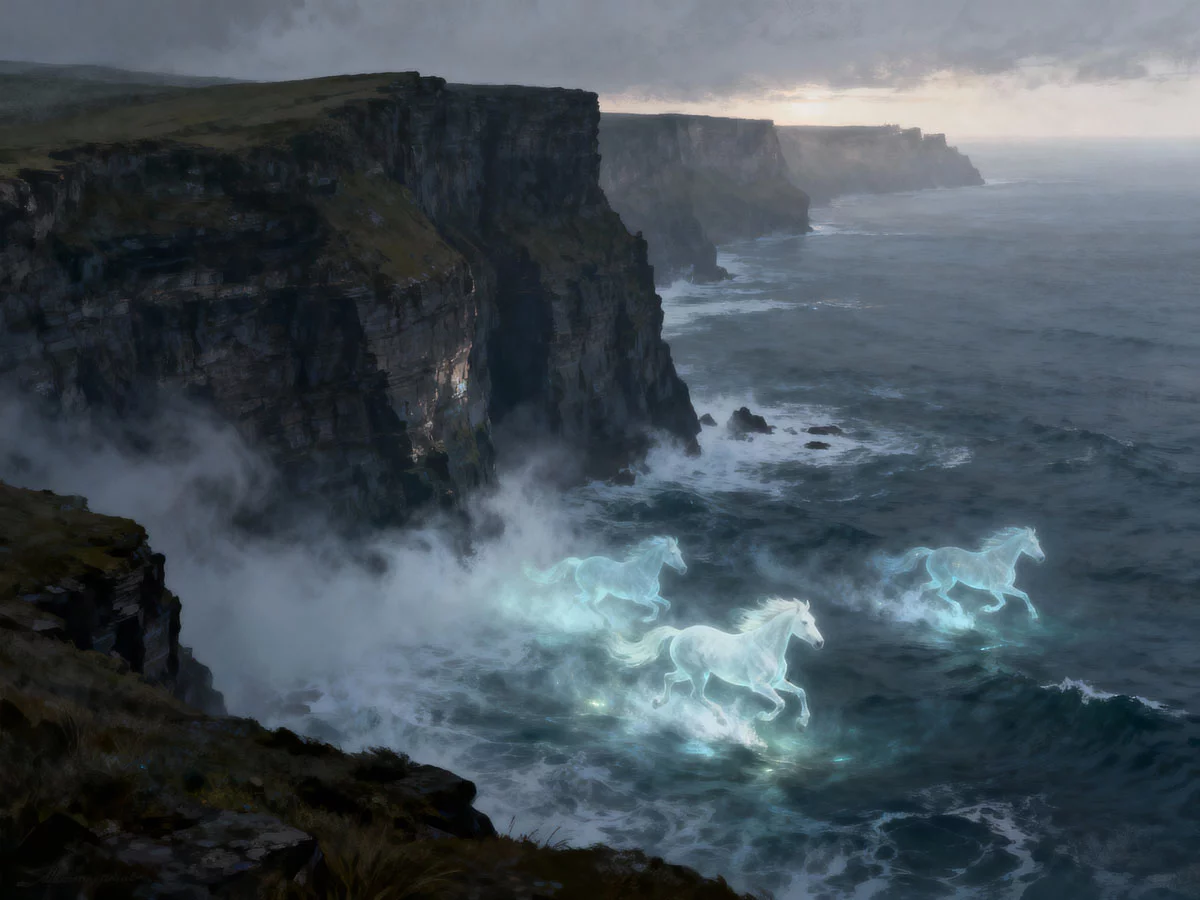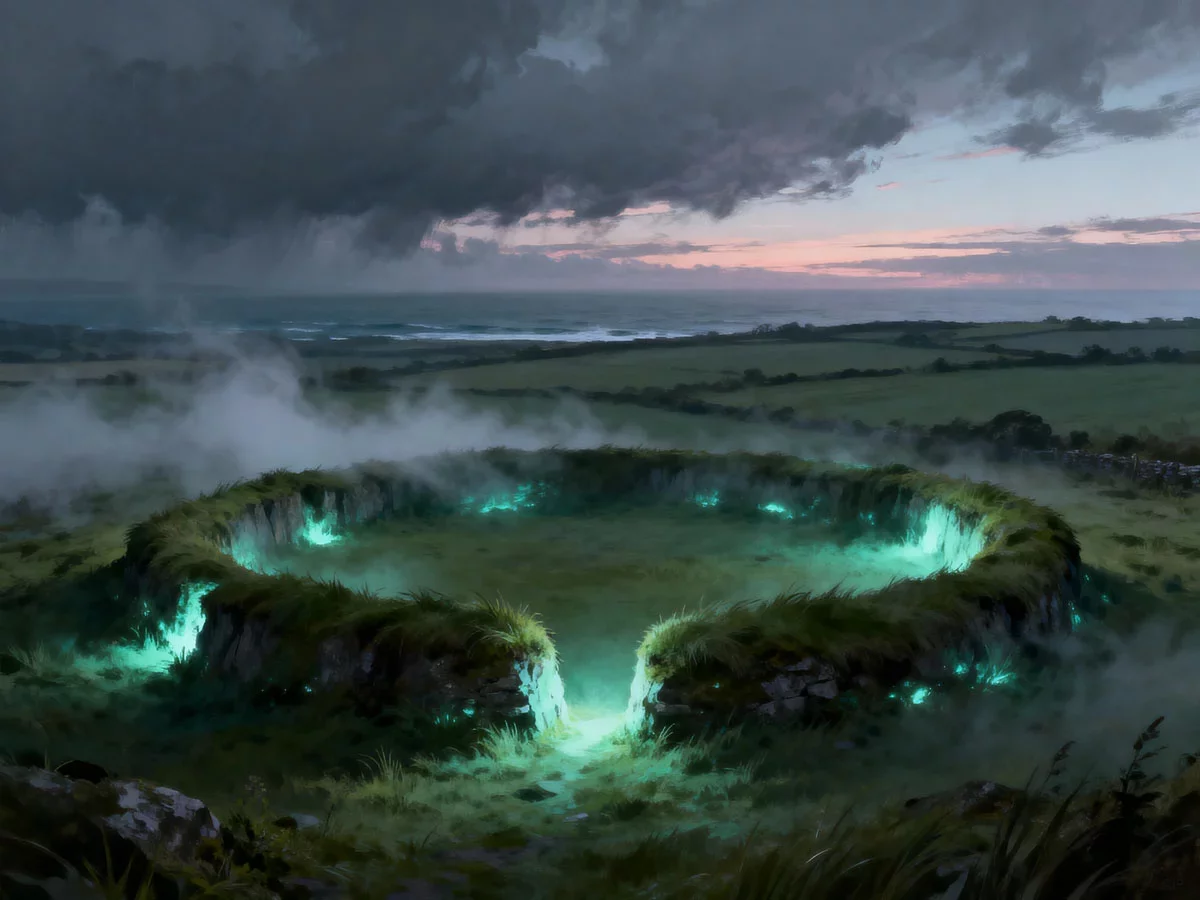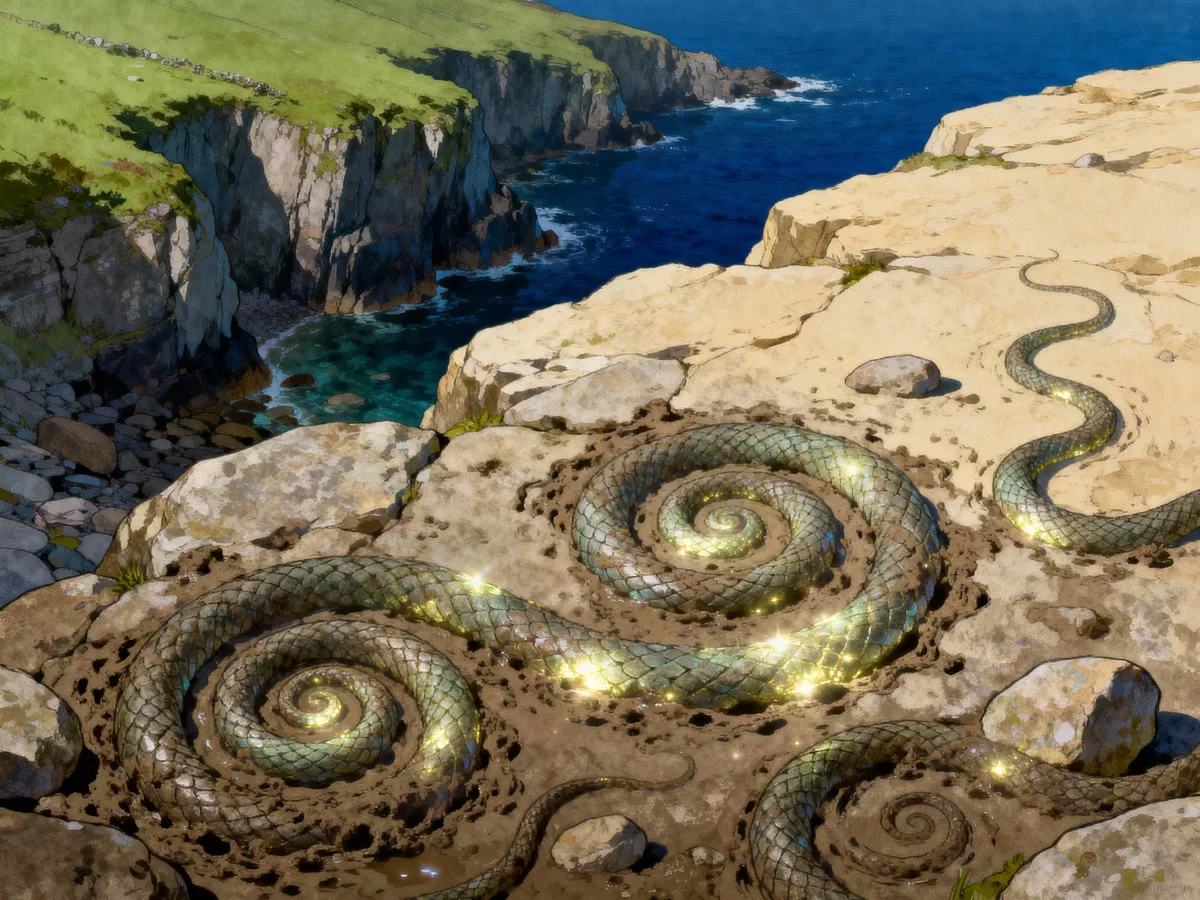The Leap of the Foals (Aill na Searrach)

The Story: The Last Gallop of the Gods
This story begins in the twilight of the gods. When the new faith of Saint Patrick swept across Ireland, its ringing bells and powerful prayers began to silence the old magic. The Tuatha Dé Danann, the ancient, god-like race of poets and magicians who had ruled the island for millennia, felt their power wane. They were beings of the sun, the earth, and the flowing water, and this new world had no place for them.
Refusing to be vanquished but unable to win, a group of the Danann made a desperate choice. They used their ancient shape-shifting magic to transform themselves into a herd of magnificent, otherworldly horses. They were whiter than the sea-foam, faster than the wind, with an intelligence and beauty that no mortal steed could ever possess. In this form, they took refuge from the changing world, hiding themselves away in a great sea cave at the base of the Cliffs of Moher.
For centuries they remained in the echoing darkness, a self-imposed exile. Outside, the world changed completely. The old ways were forgotten, fading from religion into folklore. Inside, the magical horses waited, their memory of the sun and the feel of open plains growing dim, like a half-forgotten dream.

After countless generations had passed in the gloom, seven foals were born in the cave. These young horses had never seen the sun. Their world was the dark, damp rock and the eternal rhythm of the waves at the cave’s mouth. One day, a strange, primal curiosity took hold of them, and together they trotted towards the entrance.
They emerged onto the clifftop and, for the first time, they saw the sky. The brilliant, dazzling light of the sun was a physical blow. To their eyes, accustomed only to shadow, the light was not beautiful; it was a terrifying, blinding fire. The vast, open space of the world, a world their ancestors had once ruled, was an overwhelming and frightening void.
Panic seized them. Blinded, terrified, and disoriented, the seven beautiful foals bolted. They galloped in a wild, mindless stampede across the top of the cliffs, running from a light they could not comprehend. Their divine heritage was lost in a moment of pure, instinctual fear. They did not see the sheer drop, the edge of the world right in front of them.

Their desperate flight took them straight over the precipice. One by one, the seven foals, the last hope of the hidden Tuatha Dé Danann, plunged from the cliff's edge in a tragic, silent cascade. Their lives ended on the cruel rocks and in the churning waves hundreds of feet below.
That place on the cliffs, a spot of breathtaking beauty, was forever marked by this immense sorrow. From that day on, it has been known by the name Aill na Searrach—The Cliff of the Foals.

Analysis: An Allegory for a Lost World
This haunting legend is far more than a simple story about animals. It is a powerful and deeply melancholic allegory for the fading of the Gaelic, pre-Christian world.
A Story of Cultural Displacement: The legend is a beautiful but sorrowful metaphor for the displacement of pagan culture by Christianity.
The Tuatha Dé Danann: As the old gods, they represent the entire Gaelic pagan order—its magic, its worldview, its connection to the land. Their retreat into a dark cave symbolizes how the old beliefs were forced out of the mainstream and "underground," surviving only in the shadows as folklore and the fairy faith of the Aos Sí.
The Foals: The seven foals are the key to the allegory. They represent a new generation, born into a diminished state, completely disconnected from their heritage (the "sunlit" world). When they finally encounter the new reality—a now-thoroughly Christianised Ireland—it is alien, incomprehensible, and terrifying to them.
The Tragic Leap: Their panicked and fatal leap is the story's tragic conclusion. It symbolises the idea that the remnants of the old culture could not adapt or survive in the "blinding light" of the new order. It was a world that no longer had a place for them, leading to their ultimate, tragic demise.
Etiological and Elegiac: Like other local tales, this is an etiological myth, giving a rich, narrative origin to the place name Aill na Searrach. But more than that, it is an elegy—a poem of serious reflection, typically a lament for the dead. The story imbues the physical landscape with a profound sense of loss and sorrow for a beautiful world that has passed away. This elegiac tone is a powerful and recurring theme in Irish mythology.
The Inversion of Light: The story brilliantly inverts the usual symbolism of light and darkness. Typically, light represents good and knowledge, while darkness represents evil or ignorance. Here, for the foals, the darkness of the cave is their home—a sanctuary. The brilliant light of the sun is a destructive, terrifying force. This reflects the perspective of the displaced culture, for whom the "light" of the new order was a force that ultimately destroyed their world.
More Folklore

Local Fairies and Hill-Forts
Ancient ringforts (liosanna) are not ruins, but gateways to the Otherworld, the home of the Aos Sí (the fairies). A powerful folk tradition dictates these sites must never be disturbed for fear of angering their powerful, supernatural residents.

Snakestone Fossils
The spiral-shaped ammonite fossils found in Liscannor flagstone are explained by a legend where St. Patrick (or another powerful figure) turned all the snakes in Ireland to stone, freezing them in the rock forever.